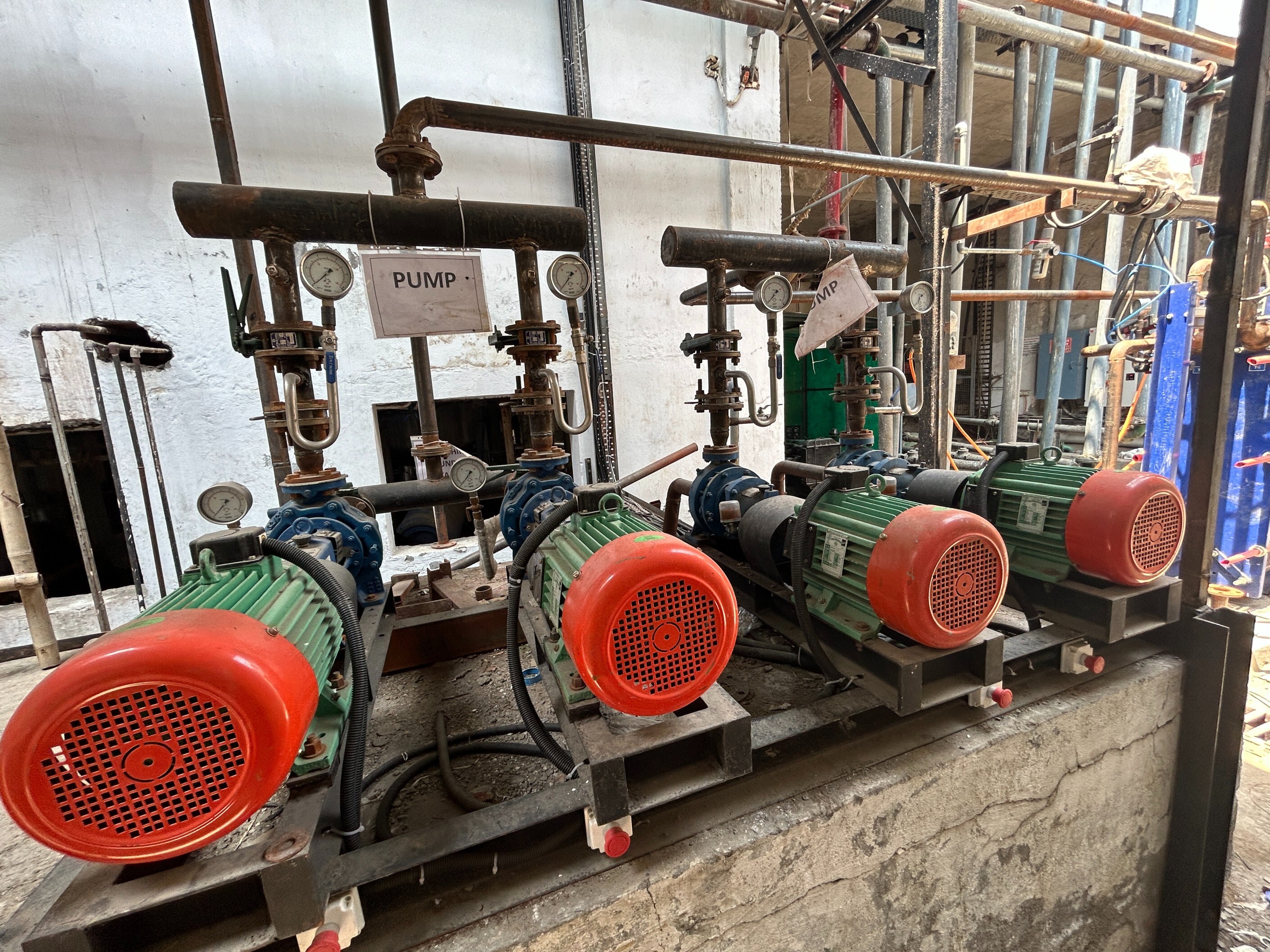Turnkey Project
Product Details:
Turnkey Project Price And Quantity
- 1 Unit
Product Description
Namoaadi Turnkey Industrial Air Dryer Projects “ Description
Namoaadi offers comprehensive turnkey solutions for industrial air dryer systems, providing end-to-end services from design and engineering to installation, commissioning, and after-sales support. Our turnkey projects are tailored to meet the specific requirements of various industries, ensuring seamless integration with existing compressed air systems.
We specialize in designing efficient air dryers that remove moisture from compressed air, protecting equipment, improving product quality, and reducing operational costs. Each system is customized to achieve precise dew points and flow rates, offering reliable performance in even the most demanding environments.
With our turnkey approach, Namoaadi manages every aspect of the project, including system design, equipment sourcing, on-site installation, testing, and training. Our solutions ensure optimal air quality, energy efficiency, and long-term reliability, all while minimizing downtime and maximizing operational efficiency.
FAQs on Industrial Air Dryers for Engineering Students
1. What is an industrial air dryer, and why is it important?
An industrial air dryer removes moisture from compressed air systems to prevent water damage, corrosion, and contamination in pneumatic equipment and processes. In industrial environments, excess moisture can lead to operational inefficiencies, product quality issues, and increased maintenance costs. By drying the air, industrial air dryers help maintain system reliability and longevity.
2. How does an industrial air dryer work?
An air dryer works by reducing the moisture content in compressed air using various techniques such as cooling (refrigerated dryers), adsorption (desiccant dryers), or filtration (membrane dryers). The primary goal is to achieve a specific dew point”the temperature at which moisture condenses out of the air.
3. What is the dew point, and why is it important in air drying?
The dew point is the temperature at which air becomes saturated with water vapor, leading to condensation. In air drying, achieving a lower dew point means removing more moisture from the air. Dew points are critical in industries where even small amounts of moisture can damage equipment or products.
- Formula to calculate dew point from temperature and relative humidity:‹ = dew point temperature
- aa and bb are constants
- (T,RH)\alpha(T, RH)
-
4. What are the different types of industrial air dryers?
There are three primary types of industrial air dryers:
- Refrigerated Air Dryers: These dryers cool the air to condense and remove moisture.
- Dew Point: Typically around 3C (38F).
- Desiccant Air Dryers: These dryers use a desiccant material to adsorb moisture from the air.
- Dew Point: Ranges from -40C (-40F) to -70C (-100F).
- Membrane Air Dryers: These dryers use membranes to separate moisture from the air stream.
- Dew Point: Typically around -40C (-40F).
-
5. How does a refrigerated air dryer work?
Refrigerated air dryers cool compressed air to a low temperature (around 3C/38F) using a refrigeration cycle. As the air cools, moisture condenses out of the air and is drained away, leaving dry air. These dryers are typically used in applications where moderate dew points are sufficient.
- Key Concept: Cooling reduces the air's capacity to hold water vapor, leading to condensation.
-
- Key Formula for Moisture Adsorption:q=MwAd‹…tq = \frac{M_w}{A_d \cdot t}
- MwM_w = mass of water vapor in the air
- AdA_d = area of desiccant
- tt = time of adsorption
-
6. What is the working principle of a desiccant air dryer?
A desiccant air dryer uses desiccant materials like silica gel or activated alumina to absorb moisture from the compressed air. The desiccant attracts and holds water molecules, effectively drying the air. Periodically, the desiccant needs to be regenerated (dried out) to maintain performance, which can be done using heat or purged air.
7. What is the difference between a heatless and a heated desiccant air dryer?
-
Heatless Desiccant Dryers: Use a portion of the dried air to regenerate the desiccant without additional heating.
- Advantage: No external heat required, simpler design.
- Disadvantage: Higher air consumption for regeneration.
-
Heated Desiccant Dryers: Use an external heat source to regenerate the desiccant.
- Advantage: More efficient, as less dry air is needed for regeneration.
- Disadvantage: More complex and requires energy for heating.
-
8. What are the factors to consider when selecting an industrial air dryer?
Several factors should be considered when selecting an industrial air dryer:
- Flow Rate: The volume of air that needs to be dried, usually measured in cubic feet per minute (CFM).
- Required Dew Point: The desired moisture content in the air, depending on the application.
- Operating Pressure: The pressure at which the dryer will operate, typically measured in bars or psi.
- Energy Efficiency: Energy consumption and cost-effectiveness of the dryer.
- Maintenance Requirements: The frequency and complexity of maintenance for the dryer.\
-
9. How does pressure affect the performance of an air dryer?
Pressure has a significant impact on the performance of air dryers. As pressure increases, the air™s ability to hold water decreases, meaning more moisture can be removed at higher pressures. However, high pressure also requires more robust equipment to handle the increased load.
- Ideal Gas Law (simplified for air dryers):PV=nRTPV = nRTWhere
- PP = pressure
- VV = volume
- nn = amount of air (in moles)
- RR = gas constant
- TT = temperature
As pressure increases, the volume decreases, concentrating the water vapor, making it easier to remove.
10. What maintenance is required for industrial air dryers?
Regular maintenance for industrial air dryers includes:
- Filter Replacement: Ensures that contaminants are removed from the air stream.
- Draining Moisture: For refrigerated dryers, ensure condensate drains are functioning properly.
- Desiccant Replacement or Regeneration: For desiccant dryers, the desiccant material needs to be regularly regenerated or replaced to maintain drying efficiency.
- Checking Refrigerant Levels: For refrigerated dryers, ensuring the refrigerant is at proper levels is crucial for optimal performance.















 Send Inquiry
Send Inquiry Send SMS
Send SMS